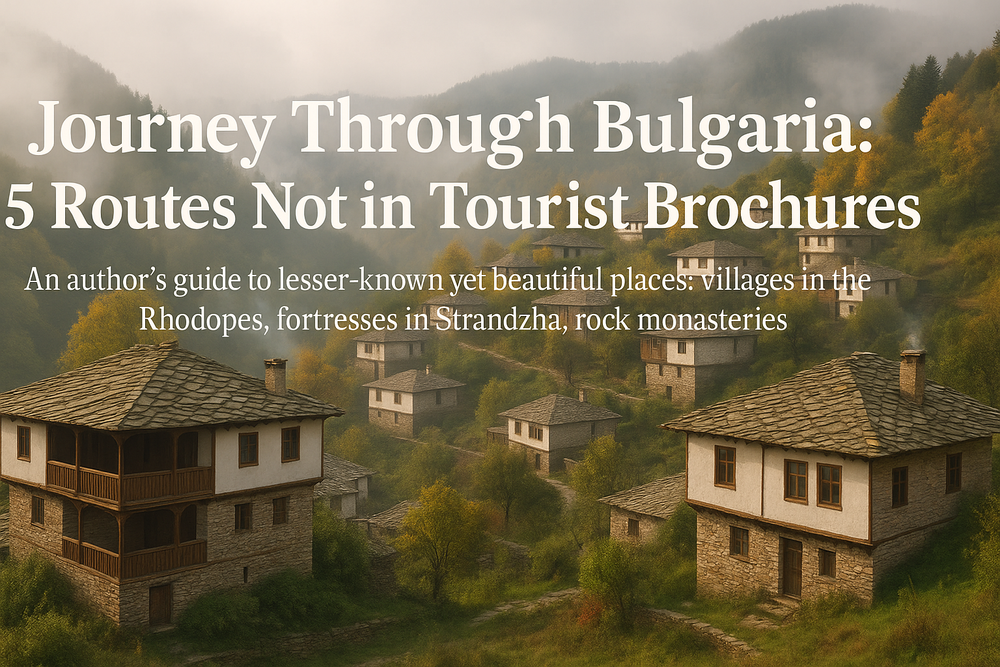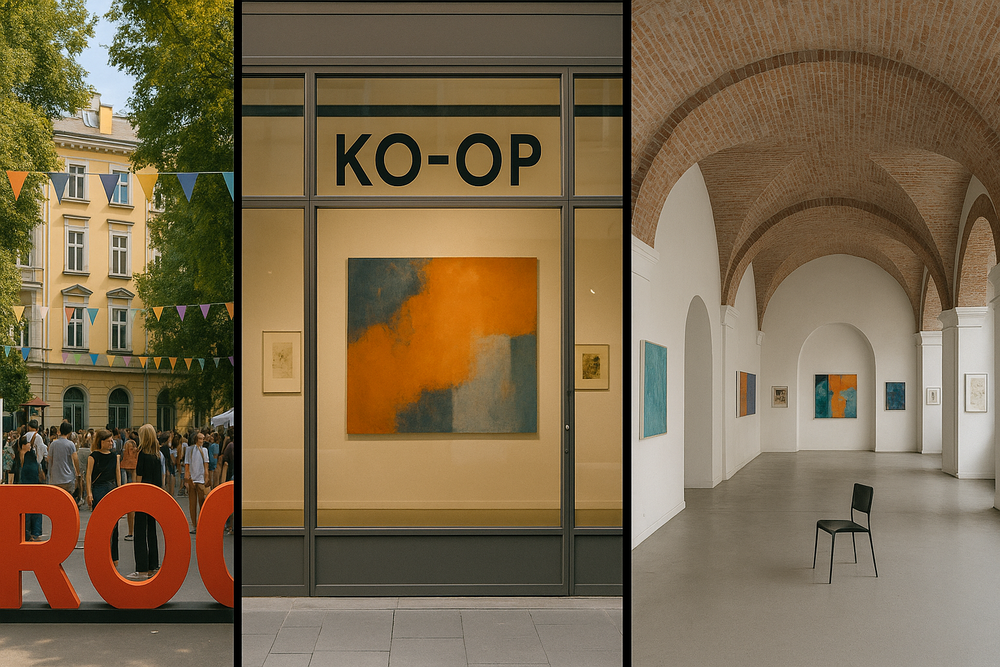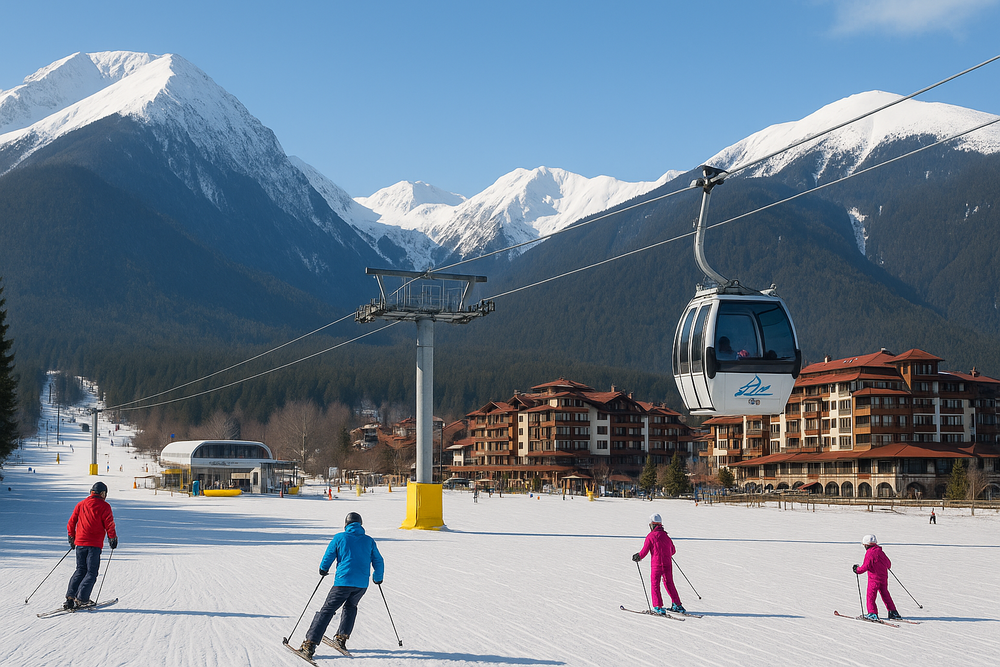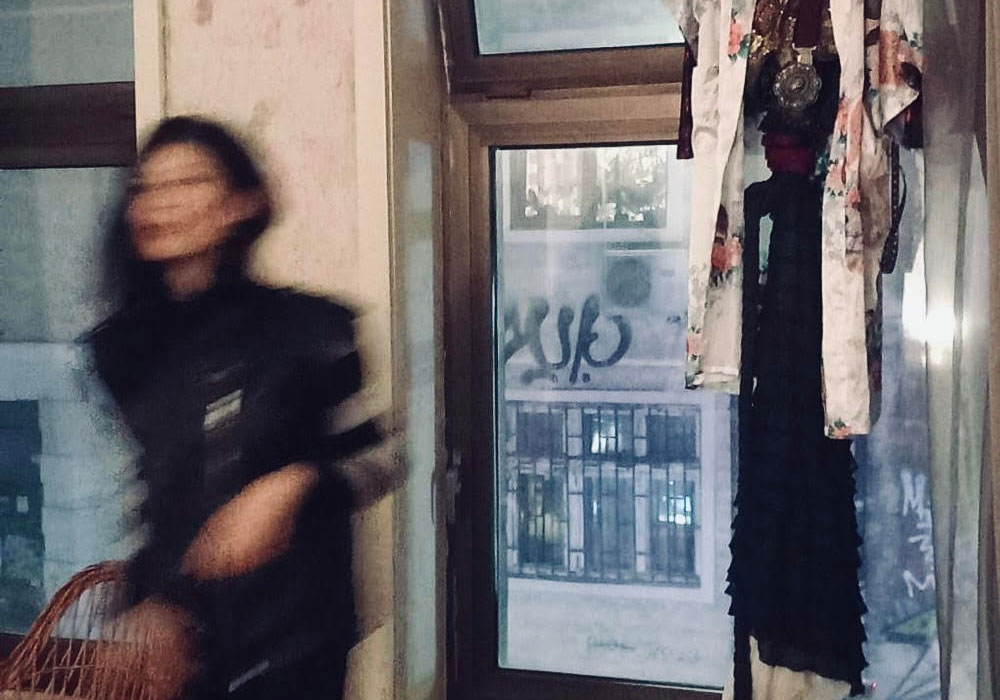
Bulgaria has long been a well-kept secret for lovers of mountain hikes, ancient ruins, and cultural depth. While most travel guides highlight Plovdiv’s Roman theatre or the beaches of Sunny Beach, a true explorer knows that magic hides elsewhere — deep in the forests, up winding mountain roads, and carved into cliffs.
Here are five handpicked, lesser-known routes through Bulgaria that reveal the country’s soul beyond the postcards.
1. The Silent Villages of the Rhodope Mountains
Route: Shiroka Laka – Gela – Mugla – Trigrad
Tucked into the soft folds of the Rhodope Mountains are villages where time moves slowly and bagpipes echo off the slopes. Start in Shiroka Laka, known for its preserved 19th-century architecture and folklore traditions. A short drive takes you to Gela, a hamlet believed to be the birthplace of Orpheus, surrounded by meadows and mountain silence. From there, descend into Mugla and finally Trigrad, where you can visit the Devil’s Throat Cave, one of the most mysterious cave systems in the Balkans.
Image idea: A misty morning in Gela with stone houses and wooden balconies.
2. Strandzha’s Forgotten Fortresses
Route: Malko Tarnovo – Mishkova Niva – Brashlyan – Petrova Niva
The Strandzha Mountains in southeastern Bulgaria are full of ancient Thracian sanctuaries, overgrown trails, and legends from borderland history. Begin your journey in Malko Tarnovo, the only town within Strandzha Nature Park, then take a forest path to the Mishkova Niva sanctuary, a megalithic tomb complex shrouded in mystery. Continue to Brashlyan, an ethnographic village, and end at Petrova Niva, a historic site of the 1903 Ilinden–Preobrazhenie Uprising.
Image idea: Crumbling Thracian ruins under pine trees, with wildflowers in the foreground.
3. Rock-Hewn Monasteries of Northeast Bulgaria
Route: Basarbovo – Ivanovo – Rusenski Lom Nature Park
Few travelers realize that Bulgaria’s northeast hosts cave monasteries carved directly into cliffs. The Basarbovo Monastery, still active today, clings to limestone rocks near the Danube. Nearby, the Ivanovo Rock Churches, a UNESCO World Heritage Site, preserve medieval frescoes that rival those in Italy. The surrounding Rusenski Lom Nature Park offers dramatic scenery, with vertical cliffs, caves, and hiking paths leading to remote hermit cells.
Image idea: Interior of Ivanovo monastery with faded but vivid 14th-century frescoes.
4. The Roman Road Through Sredna Gora
Route: Hisarya – Starosel – Koprivshtitsa
This route follows the ancient Roman road once connecting Thrace to the north. Start in Hisarya, a spa town famous for its Roman walls and mineral springs. Visit the Thracian tomb of Starosel, an archaeological site older than many European ruins. End in Koprivshtitsa, a perfectly preserved 19th-century town that feels like a living museum of the Bulgarian National Revival.
Image idea: Panoramic shot of Starosel’s domed Thracian tomb with rolling vineyards beyond.
5. The Limestone Wonderland of Northwest Bulgaria
Route: Belogradchik – Magura Cave – Chuprene
Often overlooked, Bulgaria’s northwest hides some of its most striking landscapes. The Belogradchik Rocks, towering red sandstone formations, surround a medieval fortress. Just a short drive away is Magura Cave, adorned with prehistoric paintings. Finish the route in Chuprene, a peaceful village near the Serbian border, ideal for stargazing and nature walks.
Image idea: Belogradchik Fortress at sunset, with the alien rock formations glowing red.
Final Thoughts
Bulgaria’s beauty lies not only in its famous landmarks but also in the quiet corners, the nearly forgotten legends, and the roads where goats outnumber cars. These five routes offer a new way to see the country — one where nature, history, and folklore weave together into unforgettable travel experiences.
Tip: Rent a car, bring a paper map (signal can be tricky), and always ask the locals — they are the true gatekeepers of these hidden places.











